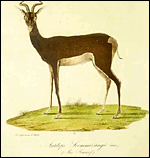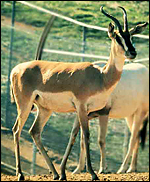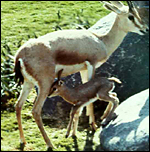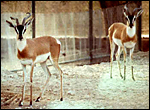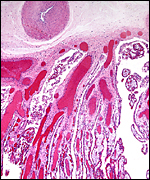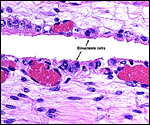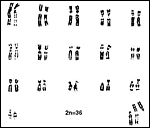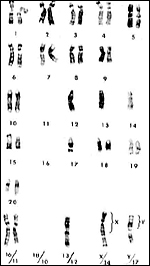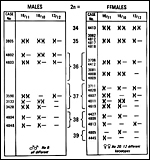|
(Clicking
on the thumbnail images below will launch a new window and a larger
version of the thumbnail.)
|
Gazella soemmerringi(i)
Order: Artiodactyla
Family:Bovidae
1) General Zoological Data
This gazelle was named in honor of a great German physician upon his 50th anniversary of obtaining the medical degree. Cretzschmar (1826) depicted that animal as being quite dark brown; it is reproduced here from the first picture. In the review of "Nanger" gazelles, however, Lange (1971) described the animal as having a light-colored back. Moreover, he suggested that a number of subspecies exist, largely differentiated by horn types. He reviewed skulls and living specimens of this species and compared them with Dama and Grant gazelles. Soemmerring's gazelle is the smallest of these species and is one of the "Nanger" (naguer) gazelles, or "Spiegelgazellen" (because of the white rear patch. The denominated specimen was said to have originated in Somalia. Most or at least many animals now kept in zoos come from Khartoum, but who it is that makes the decision for the denomination "Soemmerring" of any given animal is unknown. This is even more dubious when their chromosomes and varied phenotypes are studied. It would appear that there is a mixture of these animals in captivity and few if any are truly Soemmerring's gazelles as originally described. This hybridization of related species with, however, different chromosome numbers, is perhaps also the reason for their frequently poor reproductive performance in captivity.
Longevity of this species was given as being 15 years 6 months (Jones, 1993). The behavior of this species was studied in detail by Walther (1964).
Mentis (1972) reviewed many characteristics of ungulate gestations. The gestational period of Soemmerring's gazelles is given as "a few days over 7 months" from observations in the Giza Zoological Garden. Singletons are the rule. The neonate observed by us weighed 2,600 g and the placenta was 175 g.
3) Implantation
There are no reports on early implantation and the mode of implantation. In general it can be expected that all reproductive aspects are very similar to those of the Mhorr gazelle. They have there been summarized in considerable detail and the reader is invited to check details there as well.
4)
General Characterization of the Placenta
The placenta of this species has not been described heretofore. One term
placenta was available to me from a newborn female that took a few breaths
but then expired. The newborn weighed 2,600 g and had a crown-rump length
of 42 cm. The multicotyledonary placenta weighed 175 g, measured 62 cm
in greatest dimension and occupied both uterine horns. The horn with the
fetus contained 37 cotyledons, whilst the lesser horn had 32 cotyledons,
essentially the same number as found in the Mhorr gazelle. The cotyledons
are arranged in 3-4 rows. The cotyledons measured between 3 and 2 cm in
widths and 0.4 cm in thickness. The umbilical cord inserted in the center
and measured 9 cm. It contained four blood vessels and the large allantoic
duct. These observations are very similar to those of the Mhorr gazelle
as well (see that chapter). This is an epithelio-chorial, multicotyledonary
placenta.
 |
Delivered placenta of Soemmerring's gazelle described here. |
The long, slender villi are covered by simple, and mostly single-nucleated trophoblast and abut maternal endometrial epithelium (which is not present in this specimen, of course). There is also too much autolysis in this specimen to make really detailed observations. Nevertheless, typical binucleate cells are present, as expected, but they are not abundant. The fetal capillaries impinge deeply upon the trophoblast. There is virtually no yellow pigmentation of trophoblast in the specimen for study.
There are two arteries and two veins. In the center is a large allantoic duct. The cord is not spiraled and was 9 cm long in this specimen. Characteristically, one pair of vessels passes to one horn, the other pair to the other horn. In addition to the paired large blood vessels, there are numerous smaller blood vessels, especially around the allantoic duct. It is lined with flat urothelium and contained some debris.
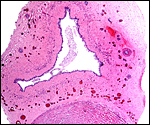 |
Central portion of the umbilical cord with allantoic duct and edge of large artery. |
No details are known.
8)
Extraplacental membranes
The outer surface of the placenta is covered with tall trophoblast and
the membrane is markedly vascularized. The amnion is extremely thin and
has no vessels.
9)
Trophoblast external to barrier
There is no infiltration of trophoblast into the endometrial stroma or
myometrium.
10)
Endometrium
No data exist and I have not had a pregnant uterus for study.
11)
Various features
No special features are known to me.
12)
Endocrinology
I am not aware of any studies detailing information on hormonal studies
of Soemmerring's gazelles. Nevertheless, it is likely that those published
for Mhorr gazelles are relevant (Pickard et al., 2001). They found by
studying fecal progestogens that the estrous cycles is 18, 6 days long
and progestins rose after the tenth week of pregnancy.
13) Genetics
The chromosomes of Soemmerring's' gazelles are complex (Benirschke, et
al., 1984). As many other African gazelles, Soemmerring's gazelles have
an autosome/X chromosome fusion. Thus, males and females would have different
chromosome numbers; generally the males have one more than females. There
is, however, also an autosome/Y chromosome fusion and several other complex
structures were found. But that is not enough; when we examined 8.20 different
so-called Soemmerring's gazelles from different localities we found 6
different chromosome numbers (ranging from 34 to 39) and various additional
(autosomal) fusions of the Robertsonian type. It is also a fact that few
of the animals examined (or kept in zoos) have the precise phenotype as
originally described when the species was named by Cretzschmar. Most animals
come from exportation out of Khartoum, but their real origin is generally
unknown. Perhaps the animals kept at Abu Dhabi (shown above) are most
like those described originally. Many animals in zoological gardens must
be assumed to be hybrids of various North African gazelles. Vassart et
al. (1995) showed well-banded chromosomes of a male with 2n=36 (see below)
and further elaborated on the complex chromosome structure of gazelles.
The dam giving birth to this neonate had 36 chromosomes; the male had
37 chromosomes and is the sire of most San Diego animals.
No details have been published.
15)
Pathological features
A common problem experienced in our group of animals has been lack of
parental care with malnutrition resulting. Iori & Lanfranchi (1996)
described the infection with helminths in animals from Somalia. Some of
our animals have suffered dental disease.
16)
Physiologic data
Various hematologic and chemical studies were summarized by Olsen &
Jones (1984).
17)
Other resources
Numerous cell strains are kept in the "Frozen Zoo" of the Zoological
Society of San Diego. They can be made available by contacting Dr. Oliver
Ryder at oryder@ucsd.edu.
18)
Other remarks - What additional Information is needed?
Implanted placenta in uteri should be studied. Also, because of the numerous
chromosomal varieties, I have recommended that only those animals be bred
that have compatible karyotypes. No hormonal data have been accumulated.
Acknowledgement
I appreciate very much the help of the pathologists at the San Diego Zoo.
References
Benirschke, K., Kumamoto, A.T., Olsen, J.H., Williams, M.M. and Oosterhuis,
J.: On the chromosomes of Gazella soemmeringi Cretzschmar, 1826.
Z. Säugetierk. 49:368-373, 1984.
Cretzschmar, P.J.: Atlas zu den Reisen im nördlichen Afrika von Eduard Rüppell. Säugethiere. Brönner, Frankfurt, 1826.
Iori, A. and Lanfranchi, P.: Contribution to the knowledge of helminthofauna of wild mammals of Somalia. Parassitologia 38:511-515, 1996.
Jones, M.L.: Longevity of ungulates in captivity. Intern. Zoo Yearbk. 32:159-169, 1993.
Lange, J.: Ein Beitrag zur systematischen Stellung der Spiegelgazellen (Genus Gazella Blainville, 1816 Subgenus Nanger Lataste, 1885). Z. Säugetierk. 36:1-18, 1971.
Mentis, M.T.: A review of some life history features of the large herbivores of Africa. The Lammergeyer 16:1-89, 1972.
Olsen, J.H. and Jones, H.: Hematologic and serum chemistry values for captive Soemmering's gazelle (Gazella soemmerringi) immobilization consultation. J. Zoo Anim. Med. 15:5-7, 1984.
Pickard, A.R., Abaigar, T., Green, D.I., Holt, W.V. and Cano, M.: Hormonal characterization of the reproductive cycle and pregnancy in the female Mohor gazelle (Gazella dama mhorr). Reproduction 122:571-580, 2001.
Vassart, M., Séguéla, A. and Hayes, H.: Chromosomal evolution in gazelles. J. Hered. 86:216-227, 1995.
Walther, F.: Zum Paarungsverhalten der Sömmeringgazelle (Gazella soemmerringi Cretzschmar 1926). Zool. Garten 29:145-160, 1964.

